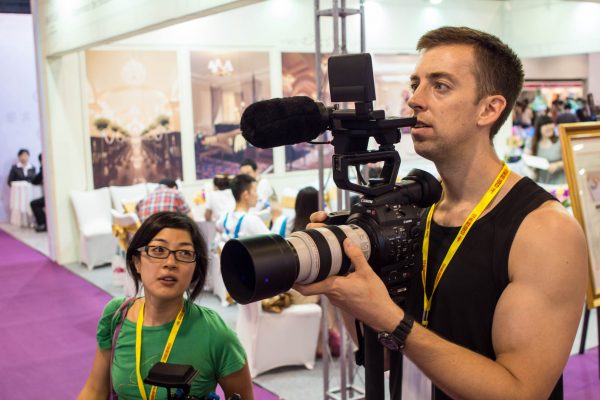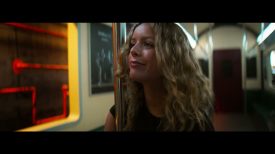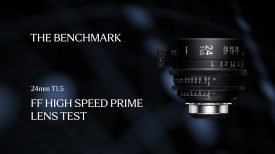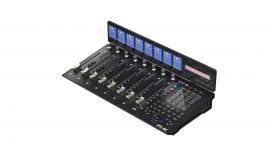Guest post by Nathan Mauger

What is the definition of love in China? As the country undergoes rapid and massive change, is the concept of love also changing? This is what we wanted to find out when we started shooting the documentary The People’s Republic of Love. But after criss-crossing China and conducting 45 interviews, we had answers to other questions as well. Such as: why would a Chinese TV dating show feature a 48-year-old virgin? How does a Communist government matchmaking agency find dates for secret service agents? Why are Chinese lesbians marrying gay men? And what is the best way to put a GPS tracker in someone’s car?
The genesis for The People’s Republic of Love was a short video about love in Beijing I previously made with producer Connie Young. Connie was a CBS News producer in Beijing at the time, and I’d been shooting a lot of news with her. Strictly for fun, we filmed In Love, In Beijing on a Canon 5D mkII over a few weeks.
What is love?
The idea was to ask Chinese people: “What is love?” and then have their answer in hand-written graphics next to them, introduced with an arty b-roll. There were three things I really wanted to do in the video: shoot underwater, show a gay couple, and include someone whose partner had died. We succeeded in all those, even though I had to film the underwater part with a freshly-broken toe, thanks to my dining room table leg!
The project turned out pretty well, but we wanted to do something bigger and full-length. So we teamed up with producer Joe Xu (of ChinaSMACK.com fame), and nine months later we’d wrapped shooting.
I’m a cameraman first, and this is the first documentary I’ve directed. When you let a cameraman be director, DoP and editor, the final product is probably going to be very good visually. That was certainly my aim with this project.
Camera choice
I’ve shot a great deal on 5D mkII and 7D cameras, for clients ranging from CNN to National Geographic. I love DSLRs; their size and form-factor are perfect for shooting in a place like China but unfixable problems like moire and aliasing are a constant issue, as is the soft image. Below is my showreel shot with those DSLRs.
Nathan Mauger 2011 Showreel (Canon 5d Mark II & 7d) from Nathan Mauger on Vimeo.
I decided to shoot instead with the C300 because I already had a bunch of Canon lenses, and I needed peaking and zebras. For years I was shooting on full-size ENG cameras, which ALL have peaking and zebras. If you’re shooting a documentary and want your shots to consistently be in focus and properly exposed, you need them. Histograms can help, but you’re going to be slower if you have to check a histogram. For run-and-gun it’s much easier to just see zebras at different exposures, overlaid right on the image.
A lot of international broadcasters won’t accept films made with the 5D. National Geographic and Discovery have rules limiting the amount of 5D footage you can use, and even how you can shoot it. For instance, when I was shooting ‘Green China Rising’ for National Geographic, our B-cameras were two 5D’s and a 7D (the main camera was Arri Alexa). Nat Geo dictated that 5D shooting had to be done on a locked-off tripod but the director was cool and knew we couldn’t always follow the rules. When we were filming deep underground in a coal mine, he wisely chose to put the 5D down there instead of his company’s Alexa. High-end channels want a high-end camera, and the 5D doesn’t always cut it because of its codec.

The C300
The image from the C300 is very, very sharp. So sharp that I didn’t use the 5D as an interview B-camera like I’d originally planned. For the web, you could get away with it but if your film is going to be broadcast and viewed in HD, there are many instances where C300 and 5D will not mix well.
In retrospect, shooting C300 was absolutely the right choice. I like the size of 5D, and I like full-frame much more than APS-C sensors. For me though, the sharp image and professional features, like peaking and zebras, make C300 worth the high price tag.
In part 2, I give my tips for documentary-style shooting with the C300.
You can find out more about the documentary on the The People’s Republic of Love Facebook page.






